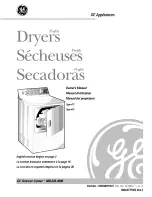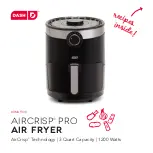
10
6. CLEANING & MAINTENANCE
6.1 GENERAL
All appliances work better and last longer when
maintained properly and kept clean. Cooking
equipment is no exception. Keep the fryer clean
during the working day and thoroughly clean at
the end of each day.
6.2 DAILY
A.
Remove and wash all removable parts.
B.
Clean all exterior surfaces of the body.
Do not use cleansers, steel wool, or any
other abrasive material on stainless steel
(see section below).
C.
Filter the cooking oil and replace if
necessary. The oil should be filtered
more often than daily under heavy use.
See the instructions packaged with your
filter for procedures.
6.3 WEEKLY
A.
Completely drain the fryer vessel into
either the filter or a steel container. Do
not use a plastic bucket or glass
container.
B.
Clean the vessel with a good grade of
cleaner or hot water and a strong
detergent.
C.
Close the drain valve and refill with
either the cleaning solution or water and
detergent.
D.
Bring to a rolling boil, turn the heat
down, and let the mixture stand until
deposits and/or carbon spots can be
rubbed off with the Teflon brush.
E.
Scrub the tank walls, bottom, and
heating elements, then drain the vessel
and rinse in clean, clear water.
F.
Refill with clean, clear water and boil
again.
G.
Drain, rinse, and dry thoroughly.
H.
Refill with cooking oil or frying
compound as directed in the above
section.
6.4 PERIODIC
Have the fryer checked and adjusted
periodically by qualified service personnel as
part of a regular kitchen maintenance program.
6.5 STAINLESS STEEL
All stainless steel body parts should be wiped
regularly with hot, soapy water during the day
and with a liquid cleaner approved for stainless
steel at the end of each day.
CAUTION!
Do not let water splash into the tank of hot
oil...it will splatter and can cause severe
burns.
Do not use steel wool, abrasive cloths, cleansers
or powders on stainless steel! If it is necessary
to remove encrusted materials, soak the area
with hot soapy water to loosen the material, then
use a wood or nylon scraper. Do not use a metal
knife, spatula, or any other metal tool to scrape
stainless steel. Scratches are almost impossible
to remove.











































